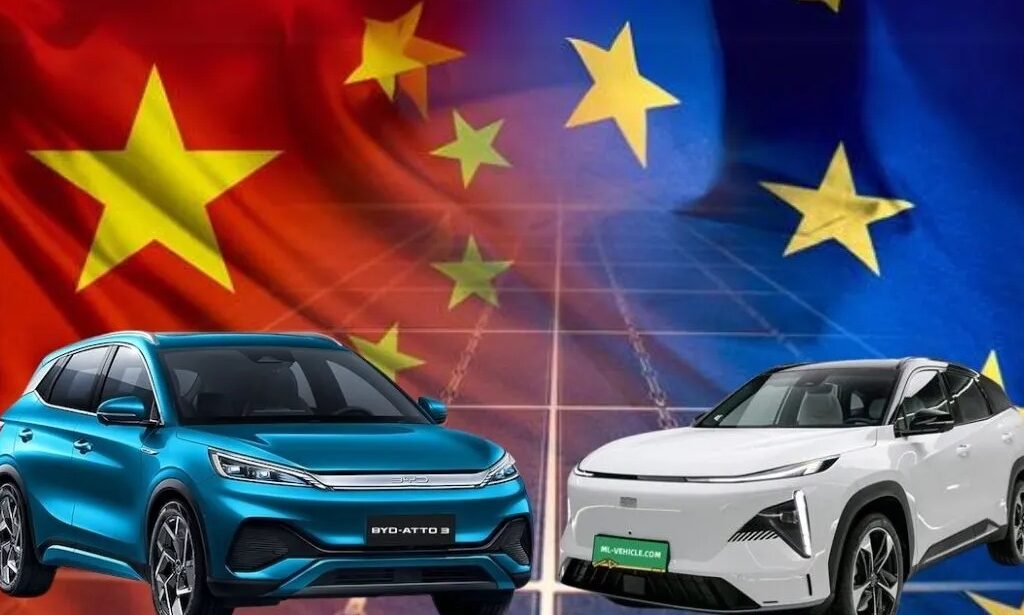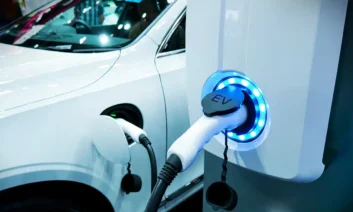As flood of Chinese EVs pushes down prices in Europe: Who wins? And how to avoid losing?
Price wars in China will shake up both new and used car markets in Europe, a report by Indicata predicts. The coming price shock is good news for consumers, bad news for traditional OEMs, and for remarketers? Yet another incentive to focus on cross-border trade, experts say.

A “bloodbath” – not our word, but the term used by industry observers cited by Indicata, to describe what’s coming to the Chinese automotive market.
One hundred EV brands
Here’s the scene: to rapidly electrify its transport, China has “let one hundred EV brands bloom”. It was always the idea that only the strong would survive.
To be sustainably profitable, these EV manufacturers need to produce a minimum of around one million vehicles per year. Even though the Chinese car market is expected to grow to above 33 million vehicles this year, only a handful of brands – among them BYD, Li Auto and Seres – are at or above that level.
Most others are burning through cash, and eventually face market exit or acquisition by a competitor. In a domestic market characterized by massive oversupply and intense competition, Chinese OEMs are resorting to desperate measures.
Dramatic price cuts
BYD recently announced dramatic price cuts across 25 models, causing an industry-wide response that has seriously reduced vehicle margins. According to Indicata, Chinese OEMs have slashed prices by up to 34%, and average EV discounts have reached a record 17%.
That price pressure cooker is why Chinese EV manufacturers are increasingly turning to international markets. In the first four months of 2025, 33% of China’s total EV production was earmarked for export. The eventual target is 50%.
However, not all markets are equally receptive to Chinese EVs – albeit for varying reasons.
Having imposed a 100% tariff on Chinese-made EVs in September last year, the U.S. is effectively off-limits as an export market.
In many parts of the world where the electrification of mobility is not yet very widespread, there is little capacity to absorb large numbers of full-electric BEVs, which require a mature charging infrastructure.
That leaves intermediately mature EV markets such as Brazil and Mexico, or smaller ones like Australia.
Much more interesting is the European Union – the world’s largest, most mature EV market (after China, that is). Even though the EU has imposed its own set of import tariffs on Chinese EVs, those are much lower than the U.S. ones. They range from about 8% to just over 35% per brand, on top of a standard 10% car import duty, i.e. a maximum of around 45%. That leaves Chinese OEMs with enough economic margin to enter the EU market. (Even more beneficial will be the system of minimum price agreements, which the EU and China are currently negotiating to replace the tariff system).
The most receptive international market may be the UK, which only charges standard import duties, and has not imposed specific ones on Chinese EVs.
“Europe more profitable”
Europe – the EU and the UK – is the most viable and profitable export destination for Chinese EV manufacturers, says Andy Shields, Global Business Unit Director at Indicata: “Despite the EU’s tariffs, Chinese OEMs can still sell BEVs in Europe more profitably than in their home market”.
As a result, the share of Chinese-made BEVs on the EU market has increased from under 1% in 2019 to 11% in 2024. In the UK, that share evolved from 2% to 18% over the same period. That trend is likely to continue, with major implications for both the new and used car markets across Europe.
How will this impact consumers, OEMs, and remarketers? We asked the experts.
Consumers: “More choice and better value”
“Almost 10 Chinese car groups either have or are planning to enter Europe with around 15 different brands. This has the potential to shake up the market as they offer competitive pricing and innovative technology, especially around EVs.”
“This pushes European carmakers to react quickly, ultimately giving consumers more choice and better value. It is of course unlikely that all new entrants will persist, but some will thrive and will ultimately capture market share.”
OEMs: “Forced to innovate faster”
“New competition can bring challenges such as price pressures and oversupply, but it also forces everyone to innovate faster. Not only is that better for consumers, it’s also positive for our own automotive industry – at least, if you believe in the importance of fair competition for innovation and progress.”
Market impact: “RVs will remain under pressure”
“Although markets continue to demonstrate higher resilience than many anticipated, there is a limit to the demand around new and used cars that can be easily absorbed by the European markets before residual values start to give.”
“We are already seeing a continued downward pressure on RVs, with Spain one of the few exceptions. We anticipate that RVs will remain under pressure this year and the next. However, it should be noted that used cars – at least on average, across all powertrain types – still trade at above-pandemic levels.”
Remarketers: “Increasing cross-border opportunities”
“Those with vehicle assets on their books will need to stay on top of the continued pressure on residual values (RVs). Don’t expect a sudden drop off the cliff. Instead, RV pressure will very likely be an ongoing trend for the time being.”
“That pressure is different for each powertrain, brand and market. Internal combustion-engine (ICE) vehicles, also supported by rising list prices, are less affected than EVs.”
“Why are EVs under more pressure? For all the reasons we already know, in particular the facts that demand for used EVs is still subdued in Europe, and that continuous technological advances in EVs lead to faster lifecycle depreciation.”
“In terms of remarketing operations, the differences in supply and demand situations across Europe imply that there are substantial commercial opportunities in cross-border remarketing, and even increasingly so in the coming months and years than today.”
Consumers: “New cars become more accessible”
“A growth in available models from Chinese brands will benefit consumers in the near term. More choice, especially offered at lower price points, will make buying a new car more accessible for many drivers.”
Electrification: “The beginning of a new phase”
“The market entry of Chinese brands marks the beginning of a new phase for the automotive industry, with ripple effects likely to be felt for years to come. It will undoubtedly accelerate EV adoption, as it helps tackle one of the principal blockers to switching to electric: the fact that the current price point is perceived as too high by many consumers.”
OEMs: “A double-edged sword”
“For traditional manufacturers, this trend is a double-edged sword. While emerging Chinese brands are capturing market share at the cost of legacy manufacturers’ customer base, there are also opportunities to be realized. Competition drives industries to innovate and keep pace, while new brands also bring new approaches, technologies and strategies that can benefit the industry.”
“The ambition and drive of the Chinese brands is clear: they want to continue capturing market share in Europe. However, even among this group of newcomers, there will be winners and losers. In the coming years, some of these brands will leave the market again.”
“Meanwhile, established manufacturers will continue to evolve their strategies and offerins in response to these challengers. Although the emergence of new Chinese brands has been a key focus over the past few years, it’s not the first time the automotive industry has weathered a significant shake-up.”
Remarketers: “A crucial role to play”
“The market is still recovering from Covid. We are yet to see volumes return to 2019 levels, so it’s too early to say that excess volumes are a problem today. However, this assessment may change, as we are unlikely to see a full return to pre-Covid car sales levels.”
“That said, we at Cox Automotive are seeing a gradual recovery in volumes across our remarketing businesses in the UK and Europe. Some sectors, such as commercial vehicles, are close to pre-pandemic levels. Overall, used car prices remain healthy, so there is still plenty of demand out there.”
“However, attempts to push new sales will inevitably impact on prices, particularly for young used cars. There are clear indications that Chinese OEMs are utilizing this to their advantage with the levels of pre-registrations we have seen in the UK.”
“It’s very early for these Chinese brands in Europe, and we are yet to see how their proposition will play out in the used market. However, the remarketers have a crucial role to play in helping manage used inventory, given the importance of RVs in whole-life cost assessment.”
Overall trend: “Unprecedented speed”
“The speed at which the Chinese OEMs are entering the European market, is unprecedented. Let’s compare this to the speed at which other new market entrants achieved a market share of 1.5% – the example here is for the UK market. It took Hyundai 25 years to get to that market share. Kia took 15 years, and Tesla 11 years. But for at least some Chinese OEMs, it takes just months to get to 1.5%. BYD got there in 24 months, Jaecoo/Omoda in just 10 months.”
Consumers: “More affordable and lower-priced cars”
“For consumers, the arrival of Chinese OEMs is good news, with lower-priced BEVs, both in terms of smaller, more affordable cars; and lower-priced cars compared to similar models produced by traditional OEMs.”
OEMs: “Tariffs will have negative effect”
“China is not the only place with production overcapacity, the same goes for Europe. Tariffs will have a negative effect on traditional OEMs: it encourages the Chinese to build factories in Europe, worsening global overcapacity.”
“There is no doubt that the profitability and survival of OEMs is being put under massive pressure. OEMs will need to focus hard on reducing capacity and dealing with unprofitable brands. These issues will only get worse for them.”
Remarketers: “Build effective cross-border strategies”
“More Chinese EVs on the European market will further exacerbate the already massive oversupply of used BEVs. To counter this, remarketers need to build effective cross-border remarketing strategies.”
“While the overall pressures will be significant, there will always be markets that decay slower than others. To identify where these markets are, you need data – and good remarketing infrastructure.”







